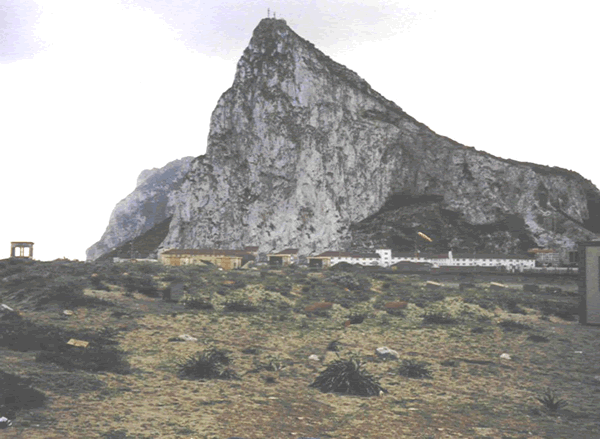 |
 |
THE ROCK OF GIBRALTAR - UNITED KINGDOM
 |
 |
 |
| Location: | Geographic coordinates: | Area: | Area - comparative: |
| Western Europe, islands including the northern one-sixth of the island of Ireland between the North Atlantic Ocean and the North Sea, northwest of France . | 54 00 N, 2 00 W | total: 244,820 sq km | slightly smaller than Oregon |
| Population: | Languages: | Capital: | Currency: |
| 59,778,002 (July 2002 est.) | English, Welsh (about 26% of the population of Wales), Scottish form of Gaelic (about 60,000 in Scotland) | London | British pound (GBP) |



| Types of rocks: | Gibraltar is a lump of limestone (Sedimentary rock) totally different on its geology to the surrounding area. |
THE ROCK - When you first see the Rock of Gibraltar, whether it is from the air, from the sea or from either the Costa del Sol or the western end of the Bay, it is its impressive stature, towering isolated above the surrounding countryside, that causes the greatest impact. It has had this effect on people for many thousands of years. Gibraltar is a beacon which signals the position of the Strait of Gibraltar, the narrow neck which separates Europe from Africa and provides the only link between the Atlantic Ocean and the Mediterranean Sea.
This beacon which attracted the early inhabitants had many advantages as a home. Being limestone, the Rock which is geologically very different from the surrounding landscape, is riddled with caves. Over 140 have been discovered so far. Those which had openings to the outside world made perfect shelters. The climate was also colder than today which meant that the sea level was lower: off the eastern cliffs of the Rock a large, flat, sandy plain stretched out towards the distant Mediterranean. It was full of good hunting.
© Guillermo Rocha, P. G. / Brooklyn College Geology Department